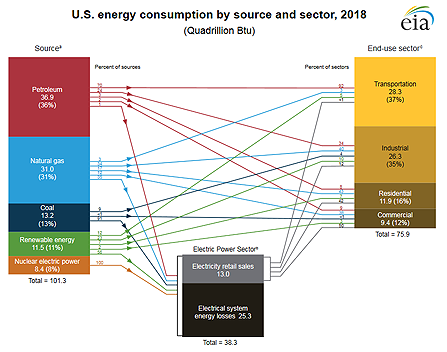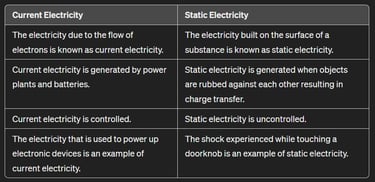Have you ever wondered what really happens to electrons when you switch on a light or use your phone? You might think that using electricity means electrons are being used up or consumed.
But is that true? Understanding this can change the way you think about electricity and how energy works in your daily life. Keep reading to uncover the surprising truth about electrons and what happens every time you plug in a device.
This knowledge will not only satisfy your curiosity but also give you a clearer picture of the invisible forces powering your world.

Credit: vibms.com
Nature Of Electricity
Electricity powers almost everything around us. It flows through wires and devices, lighting homes and running machines. Understanding the nature of electricity helps us see what really happens during its use. Many wonder if electrons get used up when electricity flows. The truth lies in how electricity works at a basic level.
Basic Principles
Electricity is the movement of electric charge. This charge usually comes from tiny particles called electrons. Electrons move through conductors like copper wires. The flow of electrons creates an electric current. This current carries energy from one place to another.
Electricity does not disappear but changes form. For example, electrical energy can become light, heat, or motion. The total number of electrons stays almost the same. They keep moving through the circuit, passing energy along.
Role Of Electrons
Electrons act like tiny carriers of energy. They move slowly but transfer energy quickly. Inside a wire, electrons bump into atoms and push energy forward. This energy powers devices without using up the electrons themselves.
Think of electrons as messengers in a relay race. They pass energy, not their own mass. This means electrons are not consumed or lost. They keep circulating while delivering energy to electrical appliances.
Common Misconceptions
Many people wonder if using electricity means electrons are being used up or destroyed. This confusion often arises because electricity feels like a resource that disappears once you use it. Clearing up these misconceptions can help you better understand how electricity actually works and why electrons are never truly consumed.
Electrons As Consumables
It’s common to think of electrons as something that gets used up, like fuel in a car. But electrons don’t disappear when you turn on a light or charge your phone. Instead, they move through wires and circuits, carrying energy without being destroyed.
Imagine electrons as tiny messengers passing along energy rather than using it up. Your devices tap into this energy as electrons flow, but the electrons themselves keep circulating. This means the number of electrons remains essentially the same before and after you use electricity.
Electricity Flow Misunderstanding
Many people picture electricity as a stream of electrons rushing out and vanishing inside appliances. The truth is more like a loop. Electrons flow in a continuous path, pushed by voltage, and return to their starting point.
Think about it like water flowing in a closed pipe system. The water doesn’t disappear; it just moves around. Similarly, electrons move through the circuit, transferring energy to your devices without being lost.
Have you ever stopped to wonder what really happens inside your gadgets when you flip a switch? Understanding this flow can change how you view energy use and efficiency in your home and devices.
How Electricity Works
Electricity powers many things in daily life. Understanding how it works helps clear common doubts. One big question: Are electrons used up when electricity flows? Let’s explore how electricity actually works.
Electrons And Current
Electricity is the flow of electrons through a material. Electrons are tiny particles inside atoms. They carry a negative electric charge. When electrons move, they create electric current.
Electric current is the rate of electron flow. It moves through wires and circuits. The electrons themselves do not disappear or get used up. Instead, they keep moving in a loop.
Think of electrons like water in a pipe. Water flows but does not vanish. Electrons flow similarly inside wires, always present and ready to move.
Energy Transfer Mechanism
Electricity delivers energy, not electrons. Electrons carry energy from the power source to devices. Devices use this energy to work, like lighting a bulb.
As electrons pass through a device, they transfer energy to it. This energy powers the device’s function. The electrons continue moving on, unchanged.
This flow is a continuous cycle. The energy moves forward, but electrons remain in the circuit. They do not get consumed or destroyed during the process.
Electrons In Circuits
Electrons play a key role in electrical circuits. They are the tiny particles that carry electric charge through wires and devices. Understanding how electrons behave helps us grasp how electricity works. Electrons do not get used up; they move and transfer energy within the circuit.
Movement Through Conductors
Electrons move through conductors like copper wires. Conductors have free electrons that can flow easily. When a voltage is applied, these electrons drift from the negative side to the positive side. This flow creates an electric current. The electrons themselves travel slowly, but the energy moves quickly through the circuit.
Inside the conductor, electrons bump into atoms. These collisions cause resistance and produce heat. Despite these interactions, electrons keep moving and transferring energy along the path.
Recycling Of Electrons
Electrons are not consumed or destroyed in circuits. They continuously cycle through the circuit components. After passing through a device, electrons return to the power source. The power source then pushes them again into the circuit.
This recycling process means the same electrons flow repeatedly. The energy carried by electrons changes form, powering devices without losing electrons. This is why electricity is sustainable and reliable for everyday use.
Conservation Of Charge
Electricity powers our homes and devices every day. A common question arises: Are electrons used up during this process? The answer lies in the principle of charge conservation. This fundamental rule explains how electric charge behaves in circuits and electrical systems.
Fundamental Physics Laws
The conservation of charge states that electric charge cannot be created or destroyed. Electrons move through wires but their total number remains constant. They flow from the power source, through the circuit, and back again.
This law is a cornerstone of physics. It ensures that charge balance is always maintained. Charges may redistribute, but the total charge in a closed system stays the same.
Implications For Electrical Systems
In electrical circuits, electrons act like carriers of energy, not as fuel to be consumed. Energy transfers as electrons move, but the electrons themselves do not disappear. They keep circulating within the circuit.
This fact helps engineers design efficient systems. Circuits rely on the steady flow of electrons to deliver power without loss of charge. This principle also explains why devices never run out of electrons while operating.

Credit: james-mcginniss.medium.com
Impact Of Misunderstandings
Misunderstandings about electricity and electrons create confusion. Many people think electrons get used up when electricity flows. This idea is incorrect but common. It affects how people learn and think about energy. These false beliefs can lead to wrong ideas about saving power and energy use. Clear knowledge is important to avoid such problems.
Educational Challenges
Teachers face difficulty explaining electricity correctly. Students often imagine electrons as small particles that disappear. This view makes it harder to grasp real electric flow concepts. Misconceptions slow down learning and cause frustration. Simple explanations about electron movement and energy help. Using clear examples can improve understanding and interest.
Effects On Energy Consumption Views
People who think electrons are consumed may misunderstand energy use. They might believe using electricity drains a limited supply of electrons. This idea causes fear about running out of electricity at home or work. It can lead to unnecessary worry or poor energy habits. Knowing electrons move in circuits, not vanish, changes this view. It helps people focus on actual energy-saving actions like reducing waste.
Clarifying The Science
Understanding how electricity works often leads to questions about electrons. Many wonder if electrons disappear or get used up when electricity powers devices. Clearing up these doubts helps us see how electric current really functions.
Correcting Myths
Electrons do not get consumed during electricity use. They move through wires and circuits, carrying energy without vanishing. Think of electrons as tiny messengers passing power along.
The energy they deliver comes from the source, like a battery or power plant. Electrons keep flowing in a loop, not running out or disappearing.
Importance Of Accurate Knowledge
Knowing how electrons behave helps us understand energy better. It prevents wrong ideas that can confuse learners or affect safety.
Clear facts support smarter energy use and better technology design. Accurate knowledge also helps explain how devices work to students and curious minds.

Credit: www.sakaarpcmb.com
Frequently Asked Questions
Are Electrons Consumed When Electricity Is Used?
No, electrons are not consumed during electricity usage. They flow through the circuit, transferring energy without being used up or destroyed.
How Do Electrons Behave In An Electric Circuit?
Electrons move through conductors, creating electric current. They transfer energy but remain intact and continue circulating within the circuit.
What Happens To Electrons After Powering Devices?
Electrons exit devices and return to the power source. They complete the circuit, ready to flow again without loss or consumption.
Can Electricity Exist Without Electrons?
Electricity fundamentally involves electron movement. Without electrons, electric current and energy transfer in circuits cannot occur.
Conclusion
Electricity flows because electrons move through wires. Electrons are not used up or lost. They keep moving, carrying energy to devices. Energy changes form, powering lights and machines. This means electrons stay the same, always present. Understanding this helps clear common confusion about electricity.
Next time you use power, remember electrons keep working. They do not disappear or vanish. Electricity relies on their constant movement and flow. Simple, yet powerful.

Leave a Reply